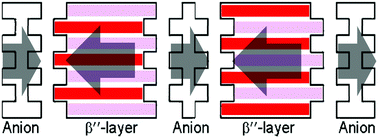Different electronic states of isomorphous chiral vs. racemic organic conducting salts, β′′-(BEDT-TTF)2(S- and rac-PROXYL-CONHCH2SO3)†‡
Abstract
The chiral and racemic salts β′′-(BEDT-TTF)2(S- and rac-PROXYL-CONHCH2SO3) (S-2 and rac-2) are almost isomorphous apart from a deviation in the C–H bond direction at the chiral centre. Both salts are metallic at room temperature, with similar broad metal-insulator transitions. Band structure calculations of the chiral and racemic salts indicate that both electronic structures are quite similar. However, at 30 K, S-2 has a resistivity that is nearly three orders of magnitude higher than that of rac-2. The results suggest a significant effect of the broken inversion symmetry, due to the positional change of only one atom.



 Please wait while we load your content...
Please wait while we load your content...